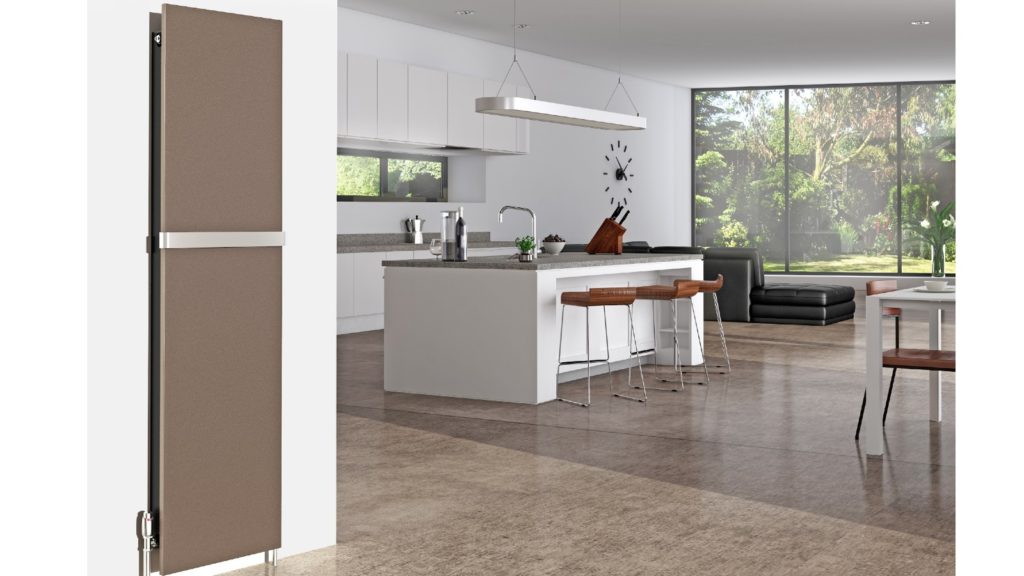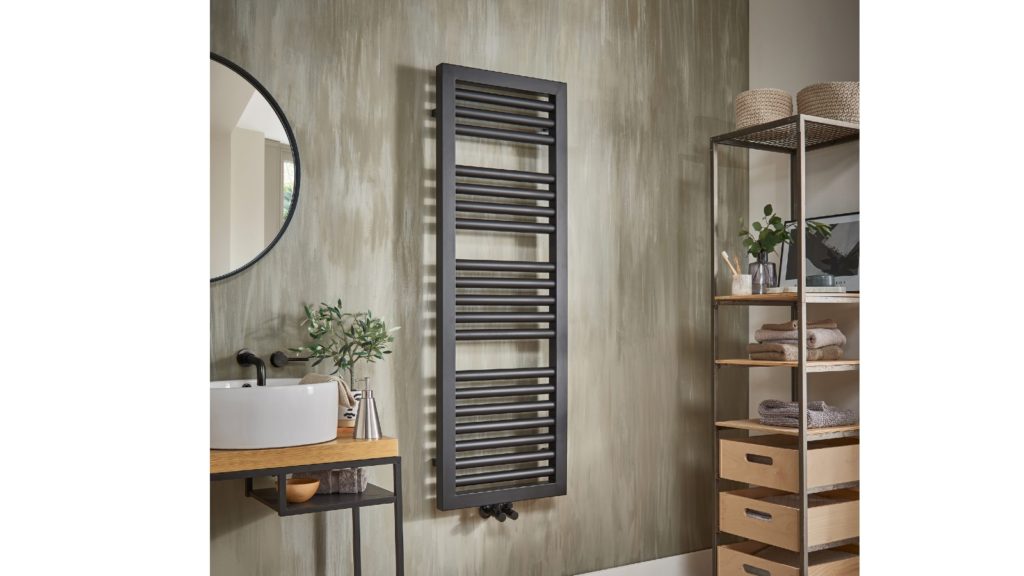Vertical models and greater energy efficiency will enable designers to reach new heights in heating specification

The Boutique Series of radiators from Stelrad are designer and decorative models for the kitchen or bathroom, with selected colours held in stock
Most recently, the radiator market has been hitting the headlines, with claims the majority of radiators will be illegal to sell after January 2022.
It has focused on test certification, following the UK’s exit from the EU, with a ruling not to allow transfer of current CE Mark test certificates, and a focus on labs retesting all models to meet UK safety requirements.
Sponsored Video
But there has also been some division in the heating industry with comments that radiator testing is already underway and so there won’t be any issue with future radiator sales.
So onwards and upwards, then.
Premium focus
What seems to be less confusing is the focus on designer radiators and the premium market.
Head of marketing at Stelrad Radiators Chris Harvey comments: “There is a definite increase in the sales of premium panel radiators, along with decorative and designer radiators.”
And sales director of Vogue (UK) Steve Birch agrees, pointing out: “As a premium manufacturer, we are confident that the luxury market will continue to be a mainstay during the post-COVID recovery, as demand for artisan, tailor-made products is a growing area.”
He points to bespoke designs and colour match finishes as set to dominate future sales in the kbb sector but says “pure and simple lines will outweigh more intricate models.”
Rising up
These simple lines will be favoured in the trend for vertical radiators, which have the design advantage of being eminently suitable for smaller spaces.

Adding to the Vogue (UK) Contemporary Collection is Contrast, which is shown in a Matt Black finish. It features rounded cross bars with square mitred joints and comes in three sizes
Chris Harvey of Stelrad Radiators explains: “Vertical radiators clearly have a smaller horizontal footprint than a traditional radiators, but they can be larger by design – taking up floor to ceiling space.
“It may be more practical and more attractive to have two modern, vertical radiators in a room than one large, standard radiator which traditionally has bene placed along under the main window.”
Sustainability agenda
And of course, with home heating such a hot topic as part of the wider energy efficiency debate, sustainability is also going to move up the agenda.
Steve Birch of Vogue (UK) says: “We have seen an extremely positive response to aluminium heating designs and we predict that this will only grow going forwards.”
And he adds: “Despite the long awaited Government plan regarding carbon emissions and heating, I would like to think that central heating will be a mainstay in British homes for the foreseeable future.”
Wheras, Stelrad is anticipating a move away from boilers towards air source heat pumps and has recently created new, larger-size vertical radiators required by the renewable heating option.
However, it seems the majority of heating manufacturers agree on one very important and salient point – radiators are fit for the future.



